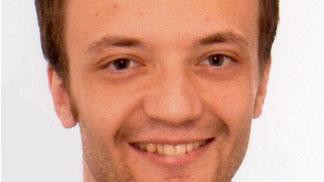IBM Research Award 2011 - Marinoni Alessandro

© 2011 EPFL
Plasma fluctuation studies in the TCV tokamak: modeling of shaping effects and advanced diagnostic development. Thesis EPFL, no 4516 (2009). Dir.: Stefano Coda.
 "For providing a physical explanation for the strong dependence of turbulence and transport in thermonuclear plasmas on the plasma shape through the application of the most advanced particle-trajectory codes"
"For providing a physical explanation for the strong dependence of turbulence and transport in thermonuclear plasmas on the plasma shape through the application of the most advanced particle-trajectory codes"
Plasma fluctuation studies in the TCV tokamak: modeling of shaping effects and advanced diagnostic development.
One of the most important issues for magnetic-confinement fusion research is the so called anomalous transport across magnetic field lines, i.e. transport exceeding that caused by collisional processes, which has to be minimized in order to increase the per-formance of a prospective hydrogen-fueled fusion reactor.
The theoretical part of this thesis consisted of extensive modeling of the effect of plasma shape, in particular of a parameter called “triangularity”, as well as of the electron colli-sion frequency on anomalous transport. This study was motivated by experiments on the TCV tokamak that had shown a drastic improvement in confinement by increasing the electron collisionality and by decreasing the triangularity from positive to negative.
Linear and nonlinear “gyrokinetic” simulations were carried out on actual TCV shots and identified a turbulent instability, called Trapped Electron Mode, as major contributor to the anomalous transport level. The variation of the heat flux with triangularity and colli-sionality calculated by the nonlinear simulations is in satisfactory quantitative agreement with the experimental results. Linear simulations and a simple analytical model explain, in agreement with nonlinear runs, the stabilization exerted by negative triangularity as due to a rather complex modification of the toroidal precessional drift of trapped particles in phase space.